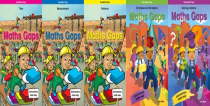Unity and Division in the Home Education Movement: A Closer Look
Recent discussions within various home education groups have brought to light a growing divide in the movement, with some home educators voicing concerns over the perceived fragmentation. While many see home educators as a unified community, in reality, home educators often hold distinct beliefs and perspectives on how children should be educated at home. Perhaps a better term than “community” is “movement”—a collective of diverse individuals who have chosen to educate their children at home, each for their own reasons.
Understanding the Diverse Views in Home Education
Within the home education movement, there are differing beliefs about what’s best for children’s education. These can be broadly grouped as follows:
- Group A: Believes that children themselves know what is in their best interest. In this view, parents should educate according to what engages and interests their children, often associated with natural learning or unschooling approaches.
- Group B: Believes that a divine authority knows what is in the best interest of children. Parents, in this view, are responsible for educating their children based on religious principles or spiritual teachings. Many Christian home educators, for example, align with this approach.
- Group C: Believes that international bodies and treaties provide guidance on what is best for children. These parents advocate for aligning their homeschooling approach with international standards.
- Group D: Believes that the national state understands what is best for children and, therefore, follows the state curriculum. Parents in this group might support home education for reasons like safety, standards or convenience but generally agree with the educational structure provided by the state.
A Turning Point: The Impact of the BELA Bill
Until recently, groups within the movement shared some common ground, particularly in opposing parts of the Basic Education Laws Amendment (BELA) Bill. Although Groups A, B, and C each had different reasons, they agreed that the bill was flawed and should be revised. However, after the bill's signing, divisions have become more pronounced, particularly regarding the requirement for state registration.
- Groups A and B: Hold that the state has no authority in home education matters. They believe parents should not need permission to educate their children or submit to any state monitoring. These groups largely reject the state registration requirement.
- Groups C and D: See value in some level of state oversight to ensure educational standards and guard against extreme views. While Group D accepts state registration as prescribed, Group C supports registration only if it aligns with international treaties and will challenge conditions it sees as incompatible with these standards.
Diverging Strategies: Compliance vs. Non-Compliance
The differing views on state registration have led to distinct strategies within the movement:
- Lawful Non-Compliance: Groups that reject registration often support “lawful non-compliance,” a strategy that involves justifying non-registration as a legitimate choice within the legal framework.
- Conditional Compliance: Group C advocates for “conditional compliance,” accepting registration but willing to legally challenge any requirements it considers inconsistent with international standards.
- Unconditional Compliance: Group D, meanwhile, opts for “unconditional compliance,” following state registration requirements without opposition.
Challenges of Division and the Role of Open Dialogue
The differing strategies and philosophies surrounding registration have caused division in the movement, with discussions often spilling over into WhatsApp groups—the primary forums for debate among home educators. These divisions sometimes result in the concentration of like-minded individuals within specific groups, often excluding dissenting opinions. While this fragmentation provides space for different voices, it can also dilute the collective strength of the movement.
Moving Forward: Finding Common Ground
Despite these differences, there remains an opportunity for unity. Recognizing that:
- All views on state involvement and registration are equally valid: Each group’s approach is shaped by the beliefs and values of the parents, and each deserves respect.
- All strategies are legitimate: Whether lawful non-compliance, conditional, or unconditional compliance, each strategy is a valid approach to navigating the complexities of home education regulation depending on circumstances.
By promoting mutual respect and supporting diverse perspectives, organizations within the home education movement can work together to preserve educational freedom. Unity doesn’t require uniformity but rather a commitment to recognizing and respecting the variety of beliefs and strategies that make up the broader home education landscape.

Comments
Events
Legal & Research
Homeschooling and the law
Home schooling was recognized in 1996 in Section 51 of the SA Schools
+ ViewCentres
Homeschool ABC
Support
Curriculums
Elroi Academy (Gr 8 - 12)
Elroi Academy – Top-Rated Distance Education Provider in South ...
Impaq: Homeschool & Online ...
Impaq: The leading homeschooling curriculum provider in South ...
Frequently Asked Questions
-
Is homeschooling legal in South Africa?
Yes. Since 1994, the right for parents to home educate their children was legalised in South Africa through the adoption of the new constitution. In...
-
Do homeschoolers take holidays?
Yes, they take breaks. Some homeschool families follow the public school year calendar especially if they are involved in sport and music...
-
Where can I find homeschool support groups?
There are many support groups consisting of parents that do things together and help each other. These groups operate on Facebook, mailing lists and...
-
Is home education often used as a smoke screen to hide child neglect?
State interference in home education is often justified as something that can identify situations where home education is used as a smoke screen to...
Has no content to show!

































